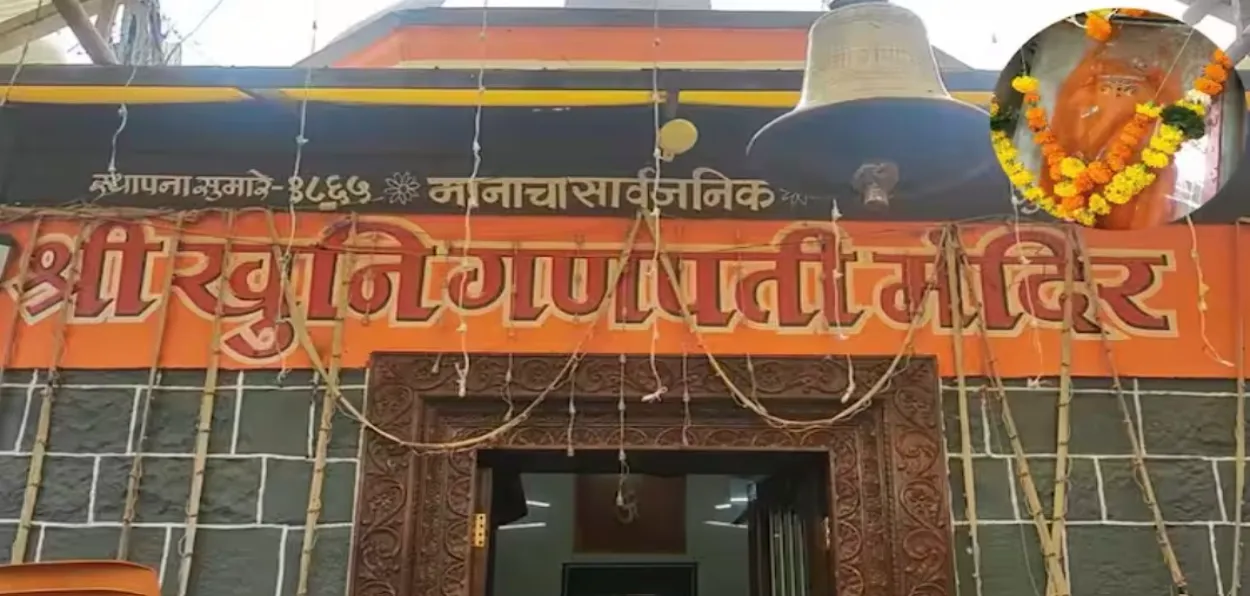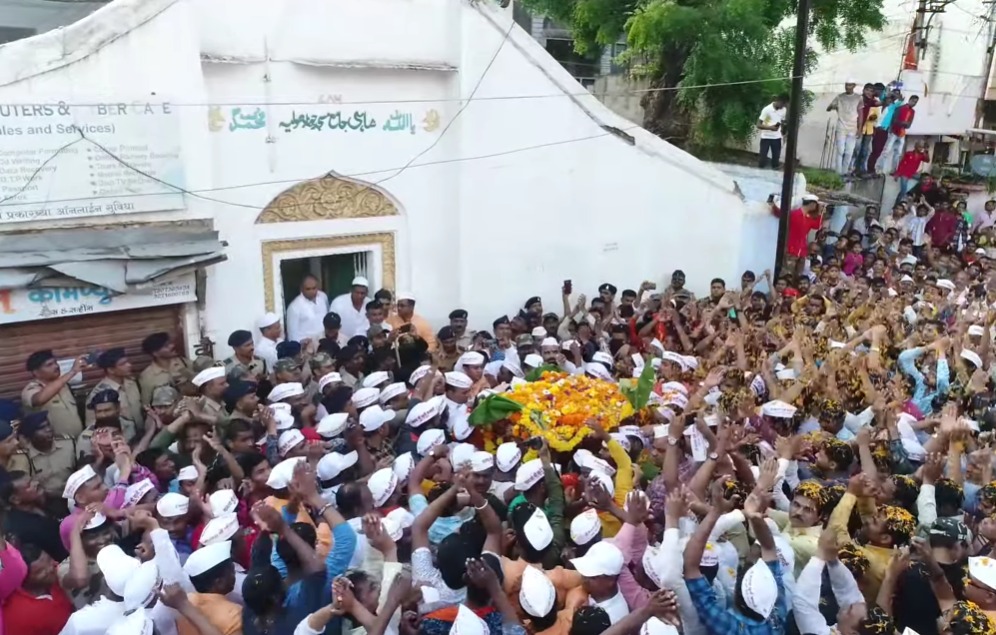
Fazal Pathan
Some 127 years ago, a conflict over the route during the Ganeshotsav was cause of the bloodshed in the Dhule city of Maharashtra. The British police fired at a Hindu-Muslim crowd squabbling over the passage of the Ganesh procession from in front of the mosque and lives were lost.
Both the communities buried the hatchet and moved on and today they commemorate the incident to show their unity during Ganeshotsav. They have named a temple as “Khooni Ganesh” to commemorate the blood of the Hindus and Muslim and celebrate the festival unitedly.
The 'Khooni Ganapati Temple' of Dhule city also known as "Manacha Ganapati" has an interesting story. Some 200 years ago, when the Panjra River was in spate, the idol of Ganapati came along the gushing water.
 Ganapati Visarjan procession passing through the mosque in Dhule
Ganapati Visarjan procession passing through the mosque in Dhule
The villagers took it as a divine signal, and took out the idol. They built a special temple on the riven bank and installed it there.
According to temple executive member Sewalal Dhole, the tradition of celebration at the temple is 127-year-old. At that time, the procession of Ganpati immersion used to pass through the old Shahi Jama Masjid of Dhule and some Muslims objected to it.
This dispute took a violent turn, and the British police fired on the crowd, in which some people died. After this incident, people linked the bloodshed with the Ganapati visarjan and named the deity as "Khooni Ganapati".
The 'Khooni Ganapati' festival is believed to have started in 1865.
In 1895, during the British rule, Lokmanya Tilak started the tradition of public Ganeshotsav. Sewalal Dhole has an interesting story about the festival.
Once upon a time there lived a freedom fighter in Dhule whose name was Khambete Guruji. He took inspiration from Tilak and started public Ganeshotsav to unite the society. Since then this festival is celebrated continuously at the main place in Dhule.
Each year, 'Khooni Ganapati' is established in the central area of Dhule city. During Ganeshotsav, people from different communities of the city gather, and everyone together celebrates this traditional festival with joy. The procession of Khooni Ganapati is taken out with traditional musical instruments like taal and mridung, which is the special identity of this festival.
Every year people from all communities of the city gather in this festival, and the arrival of Khooni Ganpati is celebrated with drums and traditional musical instruments in a procession (Shobha Yatra). The special thing is that gulal is not used during this procession and it is celebrated in a completely traditional manner.
.jpg) Muslims welcoming Lord Ganesh as the procession heads for its Visarjan
Muslims welcoming Lord Ganesh as the procession heads for its Visarjan
The procession of Khooni Ganpati is now welcomed by the Muslim community. Earlier, the history of this procession was associated with Hindu-Muslim conflict, but the coming generations have created a new history by respecting each other's religion. Where earlier there used to be conflict when the procession passed in front of the mosque, now there is a harmonious atmosphere at the same place.
When the procession of immersion passes in front of the Jama Masjid, the Maulana of the mosque welcomes it at the entrance. People of the Muslim community welcome the procession by showering flowers.
This 390-year-old mosque located in Juna Dhuliya is known as Shahi (Khooni) Masjid. Muslim workers of the mosque say that this tradition has been going on for many years. They say, "With the blessings of Allah, both of us communities celebrate this festival together with joy. No untoward incident takes place here."
The Aarti, final part of Hindu prayers, is performed in front of the mosque. Thereafter the idol of Ganapati is taken for immersion.
According to the locals, when the idol of Ganapati reaches in front of the mosque, it becomes heavier, which is considered a miracle.
On Anant Chaturdashi, the last day of the 10-day Ganeshotsav festival, the idol is taken out for immersion in a palanquin. On this occasion, traditional dance is performed by the devotees to the sound of traditional drums and mridang.
Modak, a Maharashtra speciality is offered as Prasad to Lord Ganesh and the Khooni Ganpati Mandal distributes prasad to 5,000 devotees.
ALSO READ: An ordinary Muslim would like to see a corruption-free Waqf system
Sewalal Dhole says, "For the last several years, Hindu-Muslim brothers organize Bhandara (prasad) on a large scale at this Ganpati place. With the grace of Ganpati and the help of Muslim brothers, prasad is distributed to at least 5000 devotees every year."
